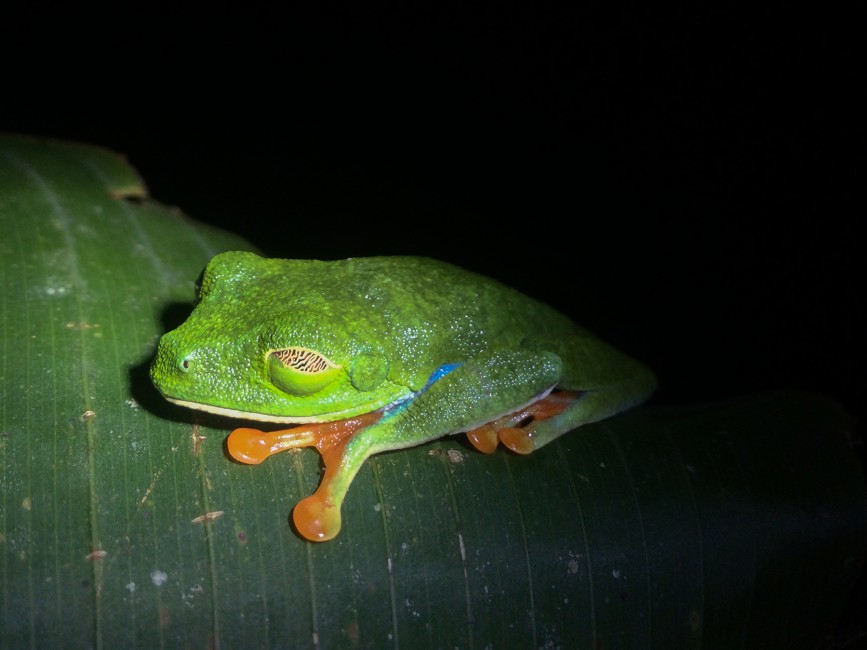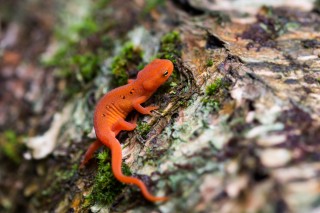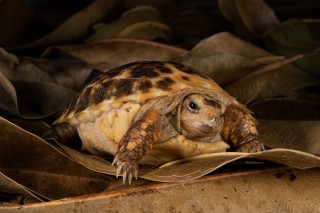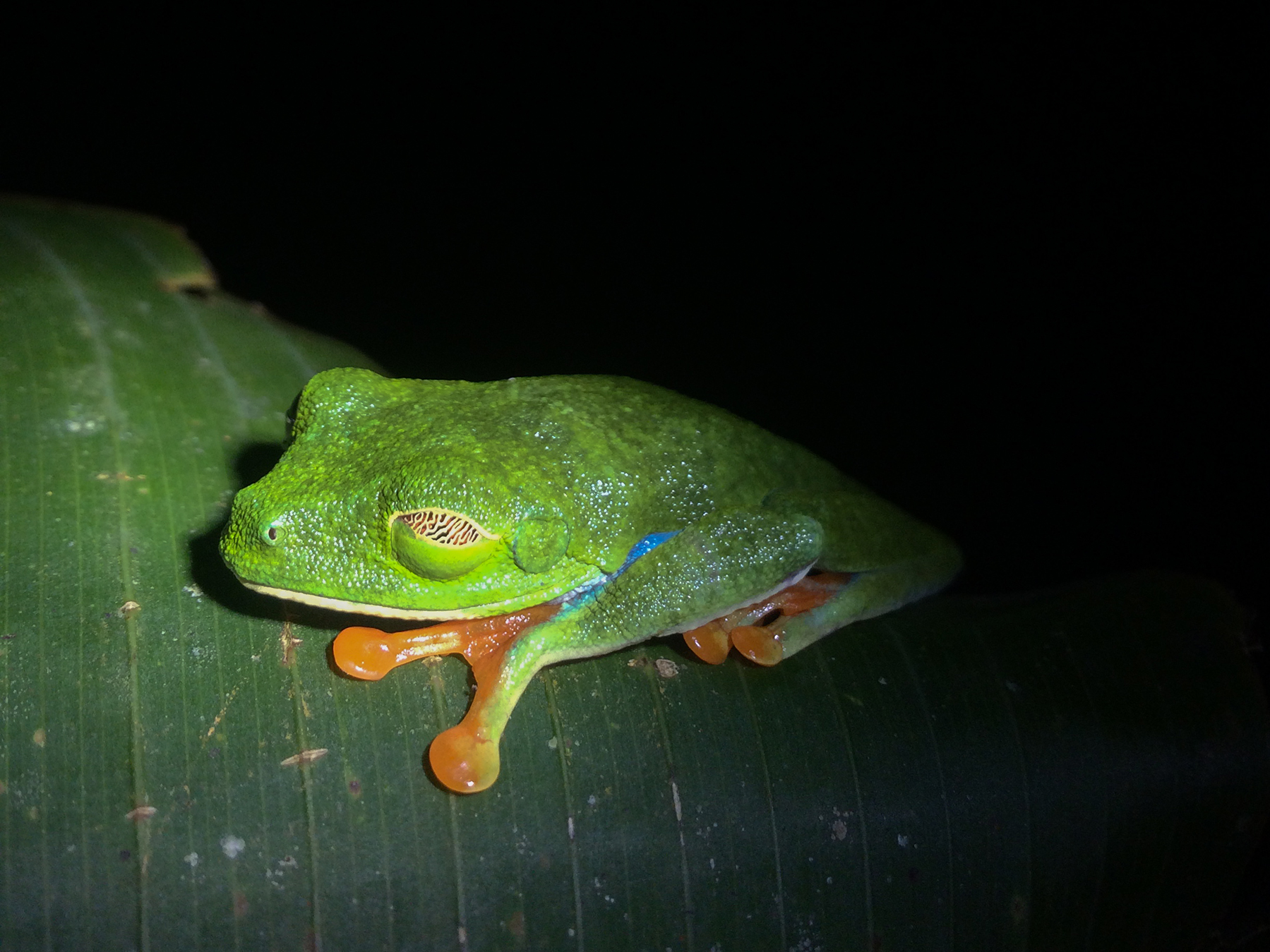
November 9, 2018
A Colorful Camouflage
- as seen by -
 Eric Januszkiewicz
Eric Januszkiewicz
On a night hike in the rainforest, you never know what you might see.
Prepared with a headlamp and my camera, I headed to a frog pond. The one species I was hoping to spot while in Costa Rica was the red-eyed tree frog (Agalychnis callidryas).
They were everywhere. These amphibians were so docile that I was able to get very close. Sometimes, they would close their eyes and drift off to sleep with me right next to them.
Red-eyed tree frogs have nictitating membranes that cover their eyes when they sleep. This membrane provides protection but also lets in just enough light for the frogs to see if a predator approaches. Theses membranes contains gold, vein-like structures that help provide camouflage. While sleeping, the frogs also pull their legs inward to cover the bright coloration on their sides, and sometimes hide their red toes under their body. They blend in perfectly with the leaf on which they reside. If a predator does find them, these frogs will uncover their markings that resemble something poisonous and make the predator second-guess their choice, even though red-eyed tree frogs are not actually poisonous.
It was amazing to see these creatures in their natural habitat, and even better to see them thriving.




Leave a Comment